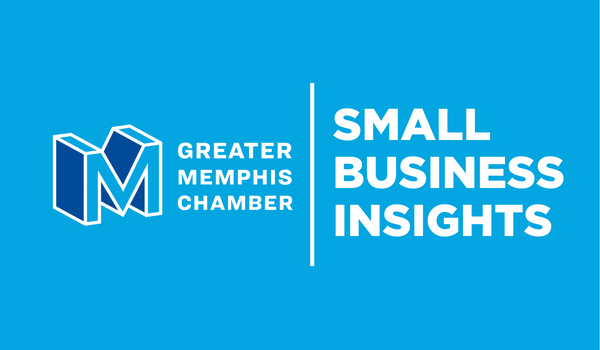
Let us first acknowledge that no matter who you are, 2022 has been challenging, money-wise. It has been noticeably hard on investors, too, with some sources asking out loud whether or not this market is worse than 2008. Inflation severely damaged purchasing power and personal savings rates, but may be finally showing some signs of retreat. However, recessionary fears remain on the horizon, complicating financial planning across the board.
The good news is that there is still time to consider the following money strategies before the year ends. It’s also important to start planning for 2023 before it arrives.
- Bolster your cash plan, ahead of a possible recession
The chances of a recession are no longer a matter of “if,” but when. Regardless of your confidence, it’s important to prepare for unforeseen expenses or life events should things turn.
Ideally, you should have at least three to six months of expenses on hand in case of an emergency. The range depends on the nature of your income, household, and other assets, but at the very least, if possible, aim for three months of expenses in your cash reserves.
- Plan for higher interest rates
Do what you can to reduce your borrowing costs. It’s also a good idea to maximize your savings by taking advantage of higher interest rates on money market funds, certificates of deposit (CDs), and U.S. Treasuries. These often have significant advantages over traditional savings accounts, where accrued interest is quite minimal. Let your cash work for you for the first time in 15 years.
- Plan for your (financial) future, looking to 2023 and beyond, as much as possible
Make regular appointments with your financial advisor for 2023, if you don’t already have them on the calendar. Aim for at least a six-month check-in beyond your last appointment.
- Review and update policy beneficiaries for insurance and retirement accounts
Take a closer look at your will. Additionally, check with the custodian of your insurance and retirement accounts, ensuring beneficiaries are updated and according to the way you need them to be.
- Review your investment allocations
Review your portfolio or work with your advisor to determine what, if anything, needs to be changed about your allocation and if accounts should be rebalanced. Also, remember to discuss any unusual scenarios, like earning extra income or receiving an inheritance or gift this year that could be invested.
- Look closely at harvesting any tax losses
Consider selling securities that struggled the most in 2022, and use the losses to offset any gains. Remember that you’re also allowed to deduct $3,000 in losses each year, over and above any gains recognized.
- Maximize your retirement savings
Maximize your company retirement plan. The annual deferral maximum is $20,500, and for those age 50 and over, you may make an additional “catch-up” contribution up to $6,500 – for $27,000 total. In 2023, those limits will increase to $22,500 and $7,500 – for $30,000 total.
Consider individual retirement account (IRA) contributions up to $6,000, and for those age 50 and over, you can make an additional $1,000 catch-up contribution.
For some people, these contributions may be tax deductible. For higher income earners, there is still the option to make “backdoor” contributions to your Roth IRA. You should consult with your financial advisor to determine which avenue is best for you.
Lastly, ensure that you maximize your Health Savings Account (HSA) contributions. For those with self-coverage the maximum is $3,650, and for those with family coverage, you have the option of contributing as much as $7,300. For those age 55 and over, you can make an additional $1,000 catch-up contribution.
- Look at Roth IRA conversions
At this time, it could be advantageous to make Roth conversions, considering the current market downturn.
- Take out your RMDs if you need to
This applies to individuals aged 72 and older. You will have a minimum amount that needs to be withdrawn from your IRA or retirement vehicle. Otherwise, the IRS may impose an excise tax penalty of 50% of the amount.
If you don’t need to withdraw for living, medical, or other expenses, you can make qualified distributions to charities. You can also speak with your financial advisor about what other options may exist for your situation.
- Annual gifting
You may gift as much as $16,000 to anyone without it being considered taxable. Plus, this number could be as high as $32,000 for spouses who elect to split gifts.
For children or grandchildren, examine your options for 529 education savings plan accounts. The $16,000 annual gift tax exclusion applies, but there is a potential election to “superfund” 529 plans with up to five years’ worth of gifts.
- Charitable gift planning
Consider the most tax efficient method for charitable giving to maximize resources including gifting appreciated assets, qualified charitable distributions (QCDs) from IRAs, and “grouping” gifts to be able to itemize deductions for tax purposes. Using a donor advised fund can also help facilitate your charitable giving plan.
- Final tip: Breathe easy
Even the most level-headed investors can become frustrated with just how challenging this year has been. Remember that periods like this are cyclical, and historically over a longer time horizon, investments have compounded at attractive growth rates. You must survive the short-term to make it to the long-term. This is a big reason not to make any short-term or impulsive decisions about your portfolio, such as pulling money out or substantially adjusting your allocations. Even if it doesn’t seem this way, things will eventually return to normal. In the meantime, focus on the things that you can control… like the 12 money matters to consider before year-end.
Tim Ellis, CPA/PFS, CFP®, is Chief Investment Officer and Wealth Advisor at RBG Wealth Advisors. RBG Wealth Advisors’ goal is to compound investment portfolios to meet financial planning needs. We also want to make sure that we do it in the most efficient way possible while preserving strategic features. If you’re interested in learning more about how we might be able to help you achieve your goals, reach out today for a consultation.


